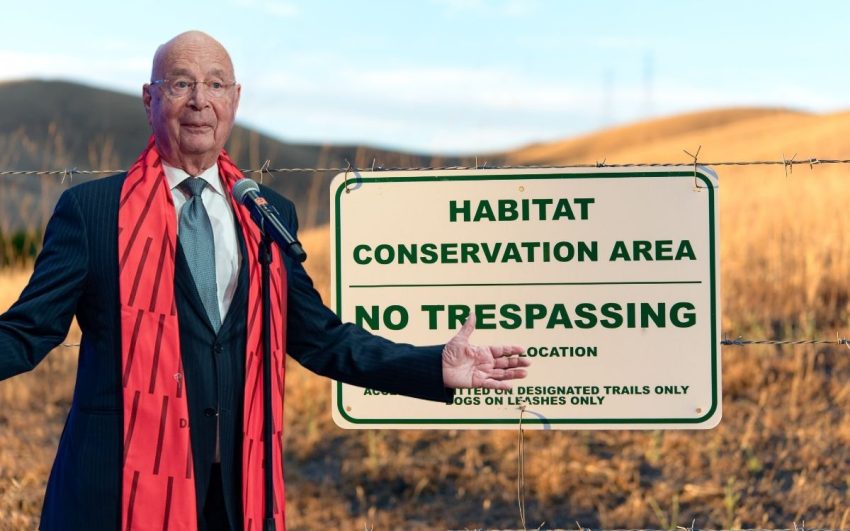In the quiet heartlands of America, where family farms have sustained generations and communities thrive on the rhythm of the seasons, a shadowy agenda is unfolding. Organizations like the World Economic Forum (WEF) and aligned globalist entities are advocating for a radical reshaping of human habitation, one that envisions cramming the vast majority of the population into densely packed urban centers while reclaiming rural expanses for massive biological corridors dedicated to wildlife. This vision, often cloaked in the language of sustainability and biodiversity, requires a brutal overhaul of rural life. To achieve it, proponents must override the rights and livelihoods of rural Americans through land seizures, engineered disasters, and economic sabotage. At the core of this strategy is a relentless assault on independent farmers, paving the way for corporate agribusiness to dominate the food supply, seize the land, and facilitate a surveillance-heavy future in so-called smart cities.
The blueprint for this transformation is evident in WEF initiatives that promote “BiodiverCities” by 2030, a framework aimed at integrating urban development with nature conservation, effectively prioritizing ecological corridors over human rural settlements. These corridors, designed to connect fragmented habitats for wildlife, are presented as essential for biodiversity recovery, such as through projects supporting the planting of endangered species in deforested areas. Yet, this comes at a human cost: global reports from groups like the World Wildlife Fund highlight how human migration patterns disrupt biodiversity, implying that depopulating rural areas could “reduce impacts” on natural ecosystems. The United Nations’ Agenda 2030 echoes this, calling for sustainable urban planning that strengthens prosperity while subtly endorsing shifts away from sprawling rural lifestyles. In essence, the plan envisions a world where cities become the primary hubs for humanity, leaving vast swaths of countryside as protected zones for animals, free from the footprint of traditional farming communities.
To make this a reality, rural America must be cleared out, and eminent domain serves as a primary tool for land acquisition. Farmers across the Midwest and beyond are already battling government seizures, where private property is taken under the guise of public good, such as for wildlife corridors or infrastructure projects. In one case, a rancher lost control of his land to protect an endangered bug habitat, illustrating how environmental mandates can override generational ownership. Legislation like the Wildlife Corridors and Habitat Connectivity Conservation Act of 2024 explicitly avoids mandating eminent domain, but critics argue it opens the door for such actions, with concerns raised in congressional hearings about potential jail time for non-compliant landowners. In Kansas and other states, federal proposals for corridors threaten millions of acres of private farmland, sparking fears of a massive land grab that could displace entire communities.
Beyond legal takings, disasters are rendering rural areas uninhabitable, fueling suspicions of deliberate negligence or worse. The sewage sludge crisis exemplifies this, where human waste repurposed as fertilizer has contaminated farmland with “forever chemicals” like PFAS, leading to livestock deaths, groundwater pollution, and disaster declarations in places like Johnson County, Texas. In Maine, the land application of such sludge has been labeled a “slow-motion disaster,” devastating small farms and raising questions about regulatory cover-ups allowing toxic waste to infiltrate rural soils. Similarly, the 2023 train derailment in East Palestine, Ohio, spilled toxic chemicals across a rural community, prompting evacuations and long-term health fears, with residents distrusting official narratives amid conspiracy theories of intentional mishandling. Carbon pipeline ruptures add to the tally, as seen in a 2020 incident in Satartia, Mississippi, where a CO2 leak hospitalized dozens and evacuated hundreds, highlighting risks to farmland like soil compaction and reduced crop yields. These events not only displace people but erode the viability of rural living, turning thriving areas into hazardous zones.
Economic pressures form the third prong of this attack, with a targeted war on farmers accelerating the decline of family-owned operations. Small farms are vanishing at an alarming rate, down seven percent since 2017, squeezed by high costs, debt, and policies that favor consolidation. Trade wars, including tariffs that tanked soybean exports, have compounded the pain, leaving rural economies unsustainable and fostering ghost towns as local businesses shutter. As family farms fold, agribusiness giants step in, dominating production and controlling the food supply chain, from seeds to processing. This shift isn’t accidental; it’s part of a broader agenda where government regulations and subsidies tilt the scales against independents, as highlighted in reports on corporate consolidation ruining rural America.
The ultimate prize is control: over food, land, and people. With rural areas depopulated, the masses herded into smart cities become easier to monitor through a technological grid. WEF discussions on securing smart cities emphasize digital systems for traffic, water, and surveillance, but critics warn of an authoritarian overlay where everything is connected and tracked. Companies like Palantir, with their software for grid resilience and data integration, play a role in this ecosystem, potentially enabling pervasive monitoring under the banner of efficiency. In these urban enclaves, freedom gives way to oversight, ensuring compliance with globalist priorities while the wilderness reclaims the countryside.
Rural America stands as the last bastion against this dystopian vision. By exposing these tactics, farmers and communities can resist the encroachment, preserving their way of life against forces that seek to erase it. The fight for the land is a fight for sovereignty, and it’s one that must be won before the corridors close in.


